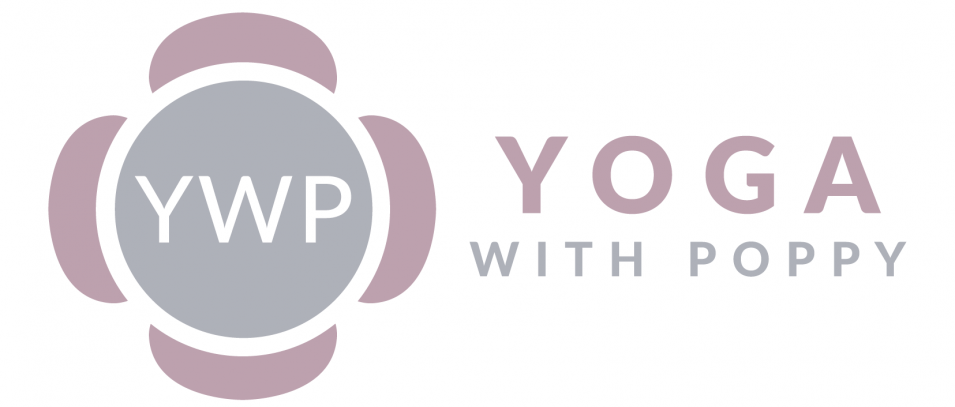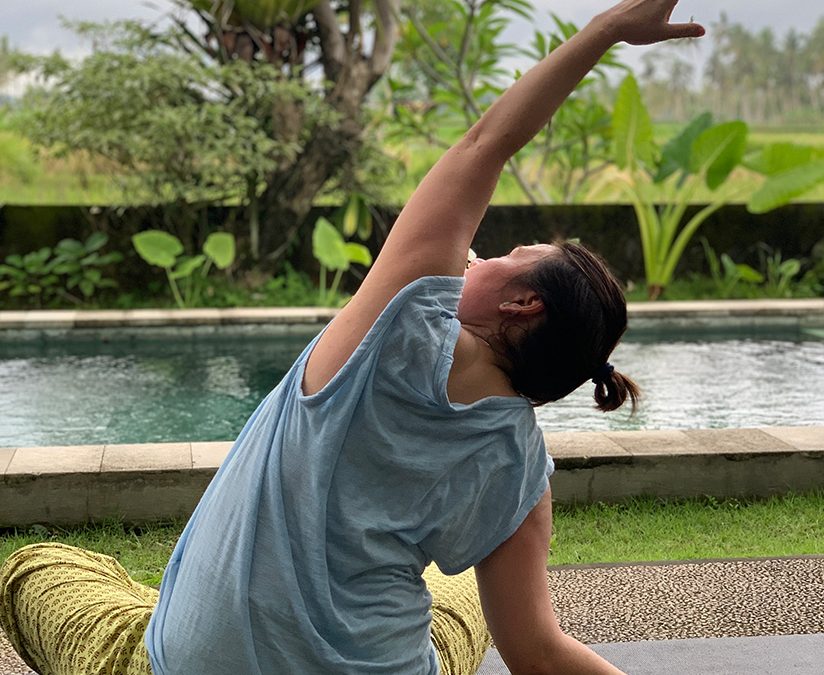Basking in the radiant warmth of Bali’s sun, my gaze is captivated by the serene beauty of a lush padi field, where delightful birds flutter about, reveling in the abundance of padi seeds. Inspired by this idyllic setting, I’ve dedicated myself to putting together this guide of valuable insights for my lovely yoga clientele, a diverse community with varied motivations and skill levels attending my classes. Appreciating the meaning of the lingo used by yoga instructors promises not only to enhance the enjoyment of our sessions but also to eliminate any potential confusion. The clarity of understanding yoga terminology empowers you to focus wholeheartedly on refining your asanas, tailoring your practice to align seamlessly with your unique physical capabilities.
What yoga lingo do I use during my classes?
In my classes, be it face to face in private tuition or on Zoom, I use words like Namaste, Asana, Mudra, Chakra.
Each yoga pose has a sanskrit name that we, yoga teachers use, so students are used to hearing it as it is intended. According to Inspire yoga, Sanskrit is actually considered one of the most beautiful languages.
Top 10 yoga words to expect in your class:
- Sanskrit:
- Description: Sanskrit is an ancient language of India and is considered the classical language of Hinduism. Many Hindu religious texts, including ancient yogic scriptures like the Vedas and Upanishads, are written in Sanskrit.
- Significance: In the context of yoga, Sanskrit is often used for the names of yoga poses and practices, contributing to the traditional and spiritual aspects of yoga.
- Namaste:
- Description: “Namaste” is a common greeting in yoga, symbolizing respect and appreciation. It involves bringing the palms together in a prayer position at the heart center and bowing the head slightly.
- Significance: Yogis use “Namaste” as a way to recognize and honor the divine spark within each individual, fostering a sense of unity and mutual respect.
- Mudra:
- Description: Mudras are symbolic hand gestures that are often integrated into yogic practices. Anjalie Mudra, for instance, involves bringing the palms together at the heart center.
- Significance: Mudras are believed to influence the flow of energy in the body and mind. They are used to enhance concentration, deepen meditation, and express certain spiritual or emotional states.
- Asanas:
- Description: Asanas refer to yoga poses or postures, and they are a fundamental aspect of the physical practice of yoga.
- Significance: Each asana has specific benefits for the body and mind. They range from simple poses (like Tadasana and Uttanasana) to more complex ones (like Virabhadrasana), contributing to strength, flexibility, balance, and overall well-being.
- Tadasana (Standing Mountain Pose):
- Description: Tadasana is a foundational standing pose where the yogi stands tall with feet together, arms by the sides, and the gaze forward.
- Significance: Tadasana promotes grounding, alignment, and awareness of posture, serving as a starting point for many other standing poses.
- Uttanasana (Forward Fold):
- Description: Uttanasana involves bending forward at the hips with the goal of bringing the hands to the floor or reaching for the shins.
- Significance: This pose stretches the back of the legs and spine, promoting flexibility and relaxation. It is often included in sequences for its calming effects.
- Utkatasana (Chair Pose):
- Description: Utkatasana mimics the posture of sitting in an imaginary chair, with arms raised overhead.
- Significance: Chair pose strengthens the legs, tones the core, and cultivates stability. It challenges balance and engages various muscle groups.
- Vrksasana (Tree Pose):
- Description: Vrksasana involves balancing on one leg while placing the sole of the other foot on the inner thigh or calf, with arms raised overhead.
- Significance: Tree pose enhances balance, concentration, and leg strength. It also encourages a sense of rootedness and connection with the earth.
- Virabhadrasana (Warrior Pose):
- Description: Virabhadrasana, or Warrior pose, comes in different variations (I, II, III), involving dynamic and powerful stances with outstretched arms.
- Significance: Warrior poses build strength, stamina, and confidence. They are named after a mythical warrior and symbolize courage and determination.
- Shavasana (Corpse Pose):
- Description: Shavasana is a relaxation pose where the practitioner lies on the back, limbs extended, and allows the body and mind to enter a state of deep relaxation.
- Significance: Shavasana is often practiced at the end of a yoga session to facilitate integration, reduce stress, and promote a meditative state. It symbolizes surrender and letting go.
Yoga is for everyone and everybody in all forms, shapes and ability. Yoga is there to help soothe the mind, heals the soul with it comes piece and happiness as well as contributing towards stability and increase mobility. As a yoga teacher, I also use the asanas/poses for healing, strengthening with the help of the breath too. I have too used yoga poses movements for whenever I suffer from backache and for body relaxation. If you are unable to go up and down there is Chair Yoga that is just as effective as the mat yoga.
Here are some common queries my clients come to me with:
Does yoga get harder as I get better at it?
As you keep practising yoga, it won’t get harder maybe a little challenging as you focus on getting better at your poses. You will feel accomplished each time you overcome a challenge, and understanding yoga terms will help you flow better through your class.
But let’s not get to caught up with this as these are just few words I use during session, the rest are all in English 🙂
I am too busy to commit to a class – how can I practice yoga?
Yoga doesn’t have to be in classes, you can take your yoga off your mat to your daily routine like kitchen for instance while waiting for the kettle to boil we have standing mountain pose to chair pose and return, or at work at the desk, what about little neck rolls, side bend, or seated forward fold. If you do want to join a class – I have classes are accessible to everyone, gentle stretches asanas help you feeling good and to increase mobility.
So there you have it, hope this has helped you on your yoga journey 🙂
Make sure you SHARE this post with everybody you know who will benefit from my Yoga Lingo guide!
Much love Poppy x

